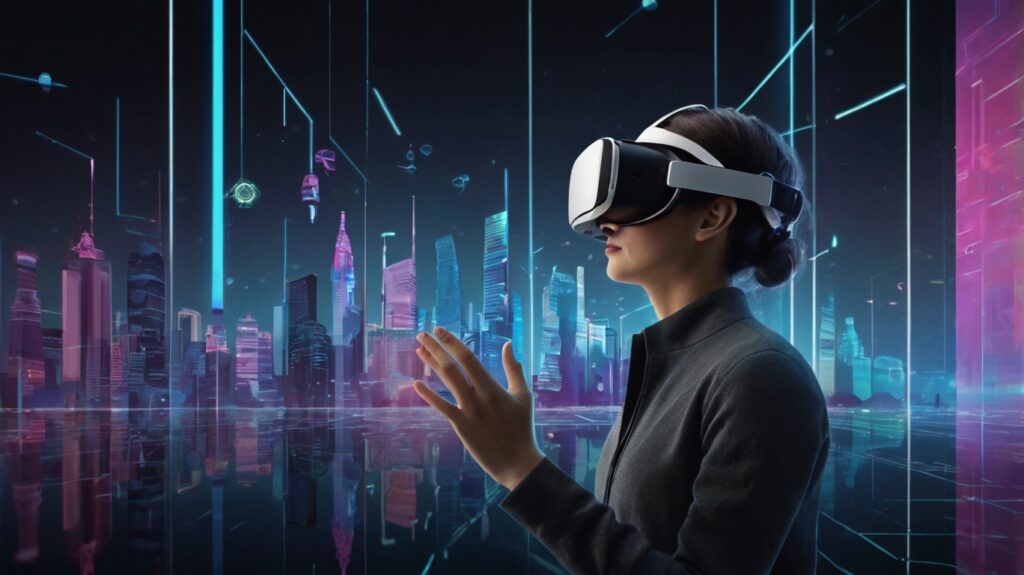
In the ever-evolving landscape of technology, the emergence of synthetic reality UX design has created a new frontier for user experience (UX) designers. This isn’t just another advancement; it’s a leap with the potential to revolutionize how we interact with the digital world, making us question the boundaries between reality and virtuality. By blending **intuitive AI interfaces** with real-world interfaces, designers are crafting experiences that are not only immersive but incredibly intuitive.
The concept of synthetic reality UX design might sound like a scenario from a sci-fi novel, but it’s becoming increasingly tangible. It encompasses a range of technologies including virtual reality (VR), augmented reality (AR), and mixed reality (MR), all powered by the wizardry of AI. These technologies are not merely about creating digital overlays on our physical world; they’re about enhancing our interaction with both realms in a seamless and natural manner.
One of the key challenges in synthetic reality UX design is creating interfaces that are both intuitive and capable of handling complex, real-world tasks. This is where intuitive AI interfaces play a crucial role. Leveraging machine learning algorithms and natural language processing, synthetic reality environments can become context-aware, adapting to the user’s needs and surroundings in real-time.
Imagine a VR application used for educational purposes, powered by intuitive AI interfaces. Instead of passively watching a video about ancient Rome, students could walk through the city, interact with its citizens, and even participate in historical events. AI could tailor the experience to each student’s learning pace and interests, transforming education into a far more engaging and personalized experience.
However, the integration of AI with real-world interfaces in synthetic reality UX design also introduces a Pandora’s box of UX design considerations. Information overload is a significant issue. Designers must ensure that digital enhancements add value rather than serve as distractions.
Privacy and security are also critical in synthetic reality UX design. As these technologies become more integrated into our daily lives, the potential for misuse escalates. It’s essential to design experiences that respect user privacy while ensuring security, creating transparent systems that users can trust and control.
Accessibility is another crucial aspect of synthetic reality UX design. Synthetic reality has the potential to make technology more accessible than ever before, but only if designers prioritize inclusivity, ensuring that these new experiences can be enjoyed by people with a wide range of abilities.
Advances in haptic feedback technology and more sophisticated voice interfaces are making virtual environments more tactile and interactions more natural. Yet, the journey of **synthetic reality UX design** is just beginning. While the technology advances rapidly, the principles of good UX design remain constant: understanding the user, their environment, and their needs, and creating experiences that are meaningful and accessible.
As we navigate this brave new world, the fusion of AI with real-world interfaces in synthetic reality UX design isn’t just about creating new forms of entertainment or simplifying tasks. It’s about enhancing our human experience, deepening our connection with the world around us, and with each other.
Synthetic reality UX design represents a monumental shift in our interaction with technology, redefining what it means to live in a digital age. UX designers, the architects of our digital future, face the monumental challenge of blending the digital and physical worlds in ways that enrich the human experience.
Synthetic reality UX design is more than the latest buzzword; it’s the next frontier in creating experiences that bridge the gap between the digital and tangible. As we venture further into this territory, the possibilities are as vast as our imagination. But we must not forget the responsibility that comes with this power—the need to design with empathy, foresight, and respect for the human condition. Technology is at its best when it enhances, not replaces, the richness of the human experience.


